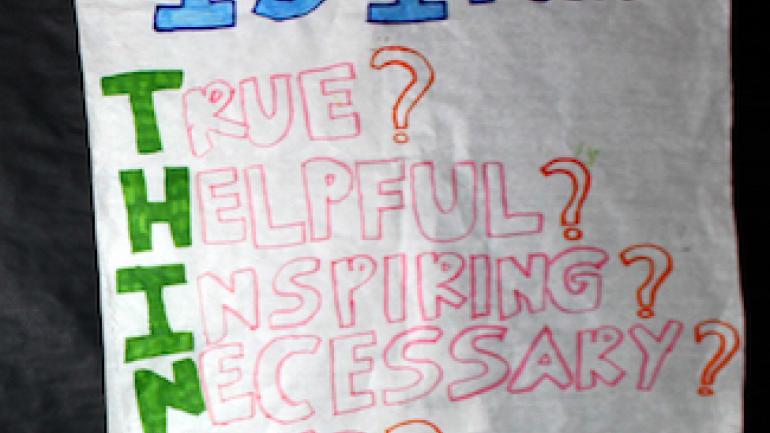
We all want to protect our kids, but what could be more inspiring than when kids want to protect kids? Gateway High School’s Peer Resource Group recently shared their work on Internet Safety at the Monday Morning All-School Meeting (MMM). From the stage they asked their peers to identify which social media platforms they used. Hands went up for the biggies: Facebook, Twitter, and Instagram. Then they asked about Myspace and gave the whole room a chance to chuckle.
The Peer Resource Group encouraged students to “THINK” before engaging with social media. Is what you are about to post, share, or tweet True, Helpful, Inspiring, Necessary, or Kind? If not, does it need to be said at all? Peer Resources asked the room to consider how they could be leaders amongst their own friends and consistently stand up for what’s right.
In a follow up interview with the Peer Resource students yesterday, they all sat up a bit when asked about Snapchat. Yes, students use it and yes, some abuse it. For anyone over 18, the mobile application (on both Android and iOS platforms) allows the user to take pictures, add text and/or drawing snippets, and send the result to a user-defined recipient list. The user also defines how long the intended recipient(s) will be able to view the image - anywhere from 1 to 10 seconds - before the image “self-destructs” and is deleted from the Snapchat server. The students confirmed that not only do some kids use this to send inappropriate pictures of themselves to other users, but a savvy recipient can also take a screenshot upon receipt, thus preserving the image on their own device and/or sharing it without the original user’s consent. The Peer Resource kids say that this latter piece is the more problematic of the two issues, which leads us right back to a great deal of safety and responsibility lying in the hands of the social media user.
Social media is a multi-directional street, something that the Peer Resources students appreciate. “You can use social media for information,” one student offered. “News,” “crowdsourcing,” “fun,” and “updates on friends and important stuff” were other perks. And most of the students seemed convinced that when used properly the benefits of social media far outweigh the negatives.
Sometimes, just reminding people that it is, indeed, people on the receiving end of every jab, taunt, or tease, is enough to break the fog. When students say it in a language other students speak, then it might even be enough to start a movement.
#heroesamongus